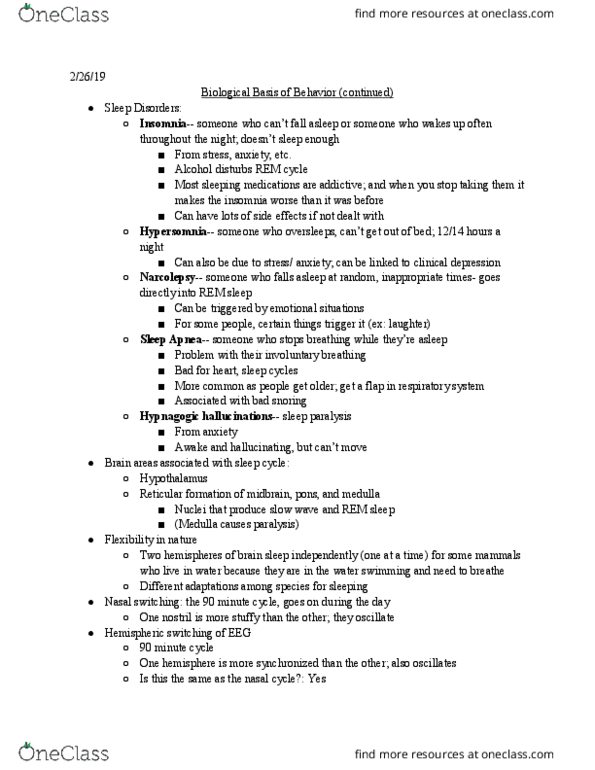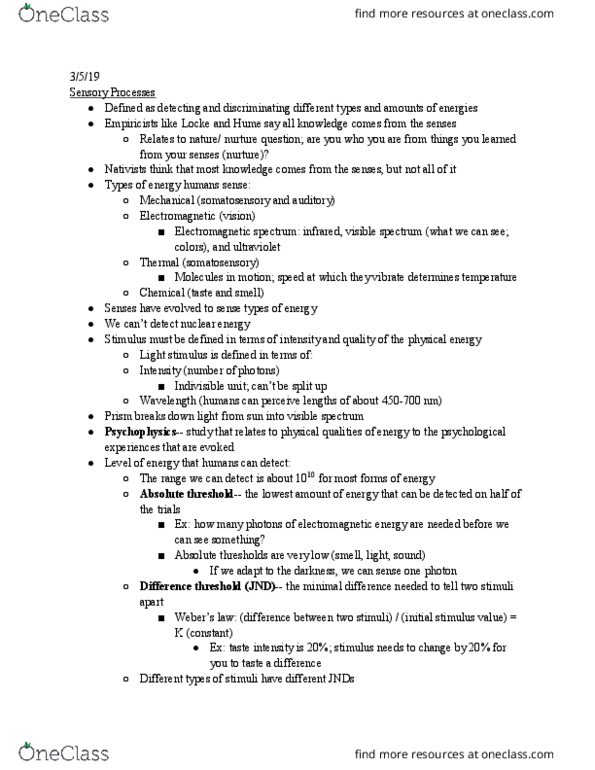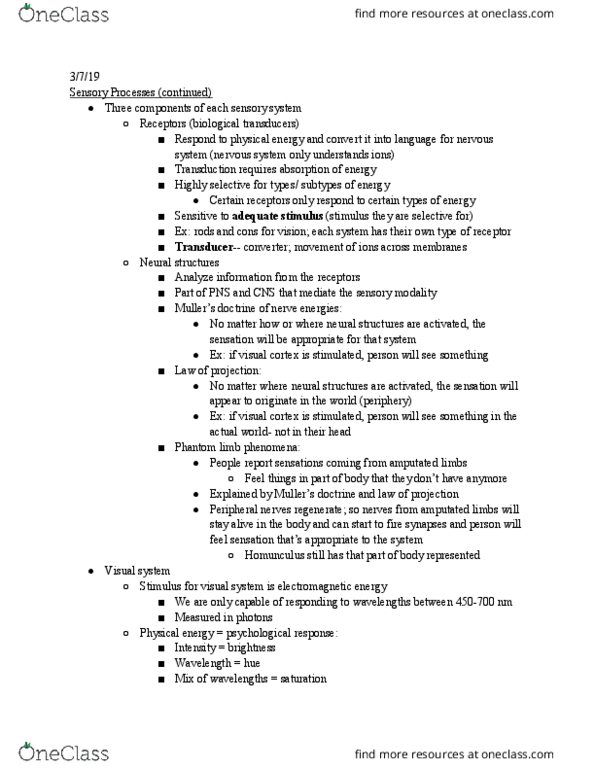PSYC 1100 Lecture Notes - Lecture 13: Electromagnetic Spectrum, Absolute Threshold, Sound Intensity
PSYC 1100 verified notes
13/30View all

3/5/19
Sensory Processes
● Defined as detecting and discriminating different types and amounts of energies
● Empiricists like Locke and Hume say all knowledge comes from the senses
○ Relates to nature/ nurture question; are you who you are from things you learned
from your senses (nurture)?
● Nativists think that most knowledge comes from the senses, but not all of it
● Types of energy humans sense:
○ Mechanical (somatosensory and auditory)
○ Electromagnetic (vision)
■ Electromagnetic spectrum: infrared, visible spectrum (what we can see;
colors), and ultraviolet
○ Thermal (somatosensory)
■ Molecules in motion; speed at which they vibrate determines temperature
○ Chemical (taste and smell)
● Senses have evolved to sense types of energy
● We can’t detect nuclear energy
● Stimulus must be defined in terms of intensity and quality of the physical energy
○ Light stimulus is defined in terms of:
○ Intensity (number of photons)
■ Indivisible unit; can’t be split up
○ Wavelength (humans can perceive lengths of about 450-700 nm)
● Prism breaks down light from sun into visible spectrum
● Psychophysics-- study that relates to physical qualities of energy to the psychological
experiences that are evoked
● Level of energy that humans can detect:
○ The range we can detect is about 1010 for most forms of energy
○ Absolute threshold-- the lowest amount of energy that can be detected on half of
the trials
■ Ex: how many photons of electromagnetic energy are needed before we
can see something?
■ Absolute thresholds are very low (smell, light, sound)
● If we adapt to the darkness, we can sense one photon
○ Difference threshold (JND)-- the minimal difference needed to tell two stimuli
apart
■ Weber’s law: (difference between two stimuli) / (initial stimulus value) =
K (constant)
● Ex: taste intensity is 20%; stimulus needs to change by 20% for
you to taste a difference
○ Different types of stimuli have different JNDs
Document Summary
Defined as detecting and discriminating different types and amounts of energies. Empiricists like locke and hume say all knowledge comes from the senses. Nativists think that most knowledge comes from the senses, but not all of it. Electromagnetic spectrum: infrared, visible spectrum (what we can see; colors), and ultraviolet. Molecules in motion; speed at which they vibrate determines temperature. Senses have evolved to sense types of energy. Stimulus must be defined in terms of intensity and quality of the physical energy. Light stimulus is defined in terms of: Wavelength (humans can perceive lengths of about 450-700 nm) Prism breaks down light from sun into visible spectrum. Psychophysics-- study that relates to physical qualities of energy to the psychological experiences that are evoked. Level of energy that humans can detect: The range we can detect is about 1010 for most forms of energy. Absolute threshold-- the lowest amount of energy that can be detected on half of the trials.





